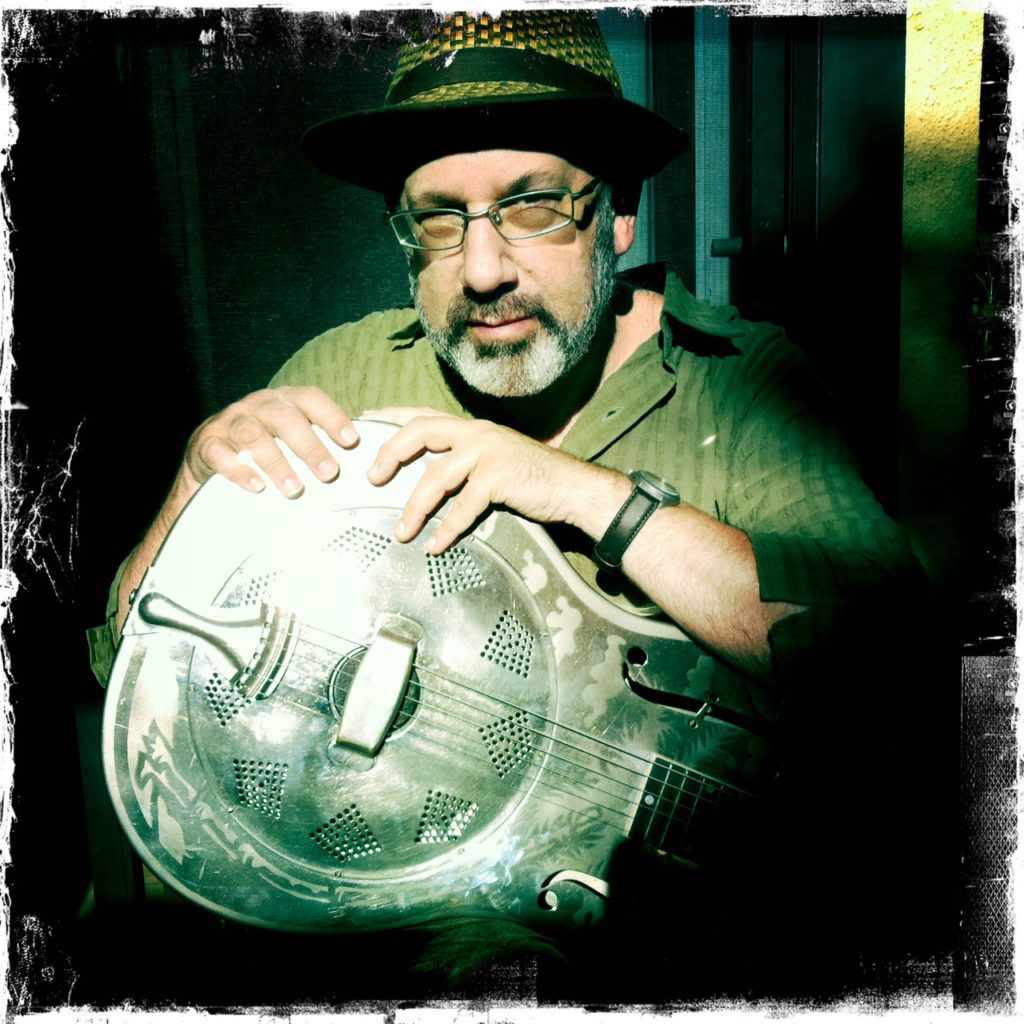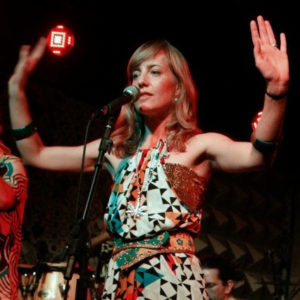
Ken Eisner is proof positive that having a bold dream, passion, musical acumen, substantial personal and professional credibility and a Rolodex filled with creative pals, wonderful things can happen. Eisner is the force behind a very unique and ambitious recording project that sees musicians from across a broad spectrum of genres collaborating on songs that come from a very specific period of time, and which have been re-imagined in some delightfully unexpected ways.
Eisner, a transplanted American who came to Canada in the early 1980s, is well known on the Vancouver arts scene as a writer and film critic, but also as a jazz aficionado and musician. He has performed hundreds of gigs as a member of the band Twisted Siskel, which is made up of film writers who also love playing jazz. His personal affinity for many different forms of musical expression, and the extensive list of music contacts he has made over the last two decades helped convince him to at least give the idea for what would become the Flypaper Orchestra a try.
“Twisted Siskel would take songs of different eras and give them a different arrangement. So we would take a Bon Jovi tune and treat it like it was an Earth Wind & Fire or Kool and the Gang song with a disco beat and stuff like that. We were constantly re-shifting things. And then we started adding songs like Pennies from Heaven and 42nd Street and giving them more of a shuffle blues kind of feel just to see how far you can push a song into a different style. About four years ago I started working on collecting a batch of these songs which I only belatedly realized were all from the 1930s and were all products of the Depression,” he said, speaking of how the first album by the Flypaper Orchestra, entitled Boulevard of Broken Dreams: Old Songs for a New Depression, began. The album was released earlier this fall on iTunes and Spotify.
Eisner brought the idea and the song ideas to producer Joe Cruz, a talented guitar player as well, who has worked with the likes of Carly Rae Jepson, Sarah McLachlan and Luke Doucet.

“We started working together on demos and once we got some tracks down, I got a grant to help with it, and I hired Rene Worst to play acoustic bass on most of the tracks and I got Geoff Hicks and Dan Perry to play drums and then I played guitar. Joe would set up the mics and occasionally play some keyboard parts or secondary guitar parts. Once we had that basic track, that’s when I began sending songs out to different people to see if they were interested. And that’s basically how the project came together. I had a wonderful response from a really wide array of artists, and that’s what the whole project is about, bringing people together who might not normally play this music,” he explained.
“I would explain the process and send the Mp3 with my scratch vocals on it and ask if they could improve on it. And almost everybody came through. The idea for the Flypaper Orchestra and this album was to be kind of a free floating cabaret, where each song has a different personality and each song is fronted by a different character. [Noted Vancouver jazz musician and actor} Jim Byrnes is kind of the MC for the thing, because he is at the beginning and the end of the album.”
The roster of other ‘characters’ participating in the project is indeed impressive. It includes the aforementioned Canadian songwriting legend Sexsmith, as well as Doucet, Byrnes, Colleen Rennison, Dalannah Gail Bowen and guitar master Robben Ford. Also contributing a scintillating vocal part is U.K. songstress Nina Miranda.
“Robben Ford and I were teenagers together growing up in California. But even when we were both playing guitar in those days, I couldn’t bring myself to play with him because he was so good. It was just too embarrassing. Even on this project, I played the backing tracks and he played his guitar over top of it, so we didn’t even play in the same room at that time. But we have remained friends over the years,” Eisner said.
“It’s like when you’re a new director and you kind of call in favours for your first movie. I don’t know how many favours I can call in for the next one, but once I got that grant money and was able to put together some tracks in the can I sent them to the people I didn’t know as well, like Harry Manx, who I have only met, and Ron Sexsmith who I had met as a journalist several times. I talked them through it and sent them the other tracks so they could see that it was a real thing and then they got interested in it. And everybody got interested in the idea behind the project – both the collaborative aspect and the content part of updating songs from the Depression for our present era.
“Once we started dealing with people who were going to be doing their parts out of town, as well as all the folks here in Vancouver it turned out it was going to be even more collaborative. We ended up having about 40 people, not just musicians but also engineers and other technical aspects as well as visual artists who worked on the cover art and the inside illustrations.”
The music has been described as cinematic, which inspired Eisner to bring in some filmmakers to create videos for some of the songs to create videos for them. Some of the songs, such as Love for Sale, Mood Indigo, Gone With the Wind and Brother, Can You Spare a Dime, would be perfect fodder for creative video treatments.
One serendipitously happy accident that happened during the sometimes complex recording process was how musicians who played parts on the same track seemed to almost have a psychic link to one another, with their parts recorded in such a manner as to make it seem like they were side by side in the studio trading licks.
“A good example is the song Rain which Ron Sexsmith did. It had never been recorded before but was in several Warner Brothers publishing books and I knew it was a contemporary song of that period. The guy who wrote it, Pete De Rose also wrote the song Deep Purple, the song that band took its name from. I sent it out to a friend I knew from the Bay Area named Jeff Narell who was one of the best steel drummers in the world and I said for him to play a solo in the middle. I gave the same track to Jesse Zubot to play violin on and when I got it back I found that they both left huge holes in their solos and I melded them together where, to me, the guys are in the room and they’re listening to each other,” Eisner said.
“And this happened over and over again. Robben Ford left some holes and then I got this clarinet player who lives in California and she went to Robben’s studio on the same day. She listened to the track and played clarinet, which is not something you normally hear on a Robben Ford track, and she was filling those gaps. In some cases it was intentional, but in most cases it was totally accidental and I was able to just shift the solos around and edit them in such a way that it always sounded intentional – like people were chasing each other or conversing with each other. And that happened on almost every track. That was a surprise to me. It’s not something you can really plan on. After a while I was alert to it and I started looking for those opportunities.”
As mentioned earlier, all the songs ended up aligning with one another in terms of the quite specific time period they were created. The Great Depression began with the stock market crash of 1929, and really didn’t end until the Second World War saw economies fire up production on a war footing. He believes those songs, especially in the more modern incarnations created for the Boulevard of Broken Dreams album, have just as much resonance today as they did 80 years ago.

“Things today have taken a darker turn with the poverty gap and income inequality and not dealing with changes in climate. That was also the big thing in the 1930s. They had the market crash but they also had massive droughts throughout North America, so you had the whole dust bowl phenomena and farmers leaving land that used to be rich and moving to the cities without any urban skills. And that’s what’s happening so much in the world right now with this constant migration. And it’s as much because of weather as it is because of war or money. I guess the journalist in me sort of took over thinking, ‘that’s weird, we have been this way before.’ It’s always only cosmetically different these waves of history,” he said.
“But we’re not really making a political statement because part of what is being said here too is that these are facts of life and just like in the 1930s, people want to have fun and people want to escape. So some of the songs we’ve recorded, like Flamingo or Temptation, they are sort of faux exotica things, because I wanted to have the whole cornucopia of life, all the factors that are working against you and then there’s the aspects of the human imagination at work and fantasy and creativity and these forces that push back against all the other negativity.”
With the buzz already being created by the project and the release of Boulevard of Broken Dreams: Old Songs for a New Depression, Eisner is already planning the theme of the next album, which will again be highly original and highly collaborative.
“It’s going to be film noir-related themes; songs related to movies from the 1940s, 1950s including science fiction, horror, film, noir – the darker stuff. And then I want to do some kind of tribute to the underground music of the 1950s, because people think of it as being a very white picket fence, Leave it to Beaver era when actually there was all kinds of subversive music and world music things happening,” he said, adding that he hopes the idea spreads to other groups of musicians.
“I would hope that especially after the second project that other people would say, ‘hey, what if a bunch of us got together and worked on a project about this certain topic.’ I would love to see other people’s ideas. These themes are just the things that interested me and held my interest over the years. I think there are enough similar ideas floating around out there. There are so many kinds of other musical, cultural and historical events that have brought people together over the years that it could be about almost anything – enough to bring together country musicians, folk and jazz and classical musicians, or even some experimental electronic music. I have always wanted to be able to not only bring people to new audiences but also bring the artists themselves to new kinds of music that they haven’t played before.”
With Flypaper Orchestra’s debut album, it appears he is doing just that.
For more information, visit http://www.flypapermusic.com.
- Jim Barber is a veteran award-winning journalist and author based in Napanee, ON, who has been writing about music and musicians for a quarter of a century. Besides his journalistic endeavours, he now works as a communications and marketing specialist. Contact him at jimbarberwritingservices@gmail.com.
SHARE THIS POST:
